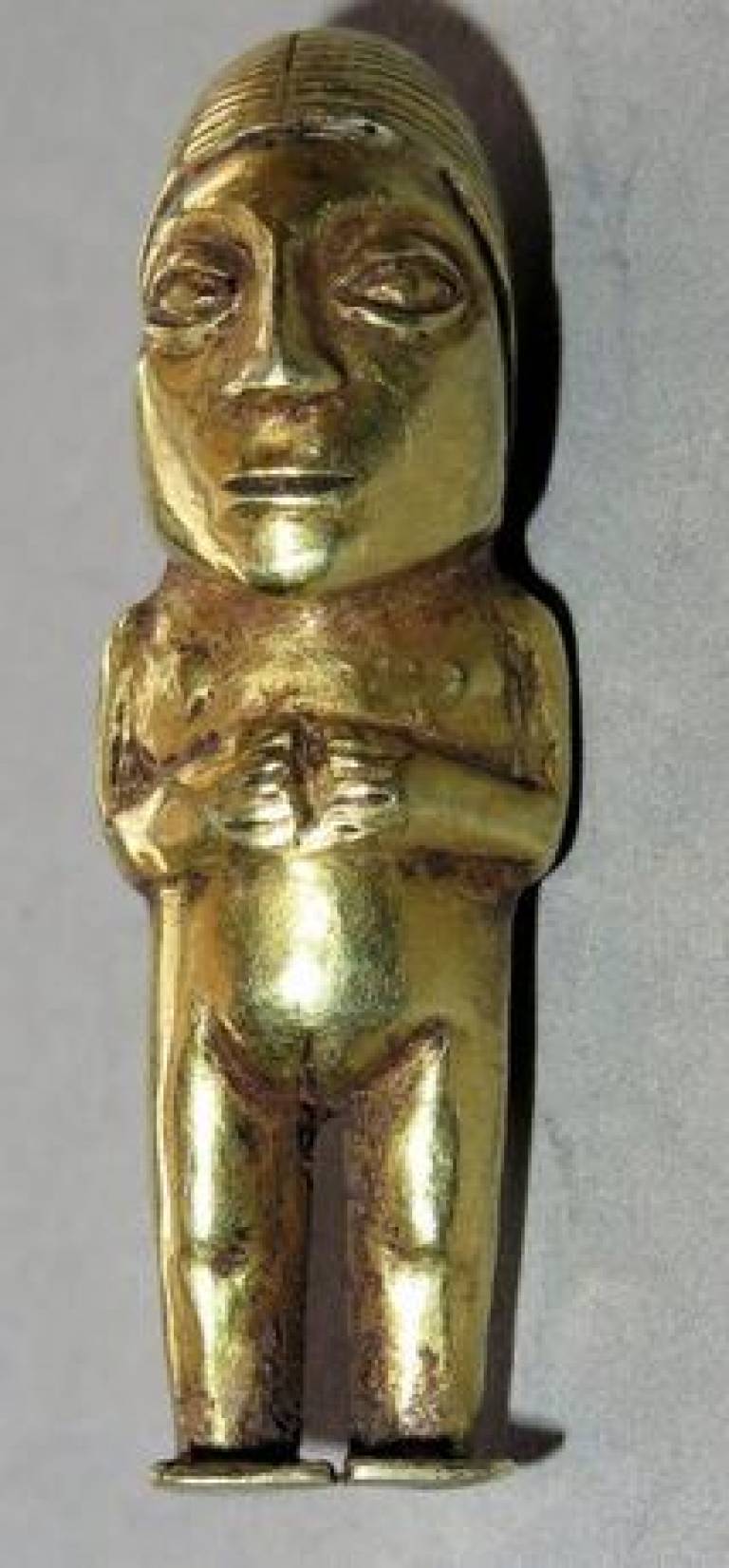Beno Rothenberg Memorial Lecture 2016: Gold working reconsidered
20 October 2016
IAMS is pleased to invite you to the Professor Beno Rothenberg Memorial Lecture 2016, which will take place UCL Institute of Archaeology on Wednesday 16 November at 6pm.

The lecture, entitled "Gold working reconsidered: a laboratory perspective" will be delivered by Dr Maria Filomena Guerra (Centre National de la Recherche Scientifique, Université Panthéon Sorbonne), and followed by a wine reception at the Leventis Gallery.
The Beno Rothenberg Memorial Lecture is a high-profile event organised by the Institute for Archaeo-Metallurgical Studies to celebrate the memory of a true pioneer. Please see below for further information on Professor Beno Rothenberg, the speaker, the lecture, and the venue.
Professor Beno Rothenberg
Professor Beno Rothenberg (1914-2012), acclaimed photographer of the emerging state of Israel, self-taught scholar and founding father of archaeo-metallurgy, was one of only a handful of scientists who between them revolutionised the way in which we study and understand the production of metal prior to the Industrial Revolution. He pioneered the fusion of traditional archaeological and science-based approaches which later came to be known as archaeometry, with a strong emphasis on painstaking data gathering and photographic documentation in the field, chemical and mineralogical analysis of the archaeological remains unearthed, and visionary, if sometimes contentious interpretation of his observations. While his interests went well beyond the beginnings of mining and metallurgy, these are where he left his strongest legacy, not least through coining the very term 'archaeo-metallurgy', now used world-wide for the study of ancient metals and their production using scientific methods, and through establishing, directly and indirectly, two of the leading academic schools in this field. He was the founder of the Institute for Archaeo-Metallurgical Studies in 1973. Further information: http://www.ucl.ac.uk/iams/iams-news-publication/rothenberg_obituar
Dr Maria Filomena Guerra
Dr Maria Filomena Guerra is one the the most respected international specialists in the field of archaeological goldwork, and a pioneer in the application on many scientific techniques to ancient metals. She has published extensively the results of her work on goldwork from America, Europe, Africa and Asia, which has allowed her to develop cross-cultural comparative perspectives about the use of noble metals in different societies. She is also renowned as a particularly engaging and informative speaker.
Dr Guerra holds a Portuguese doctoral degree in Nuclear Physics and a French doctoral degree in Material Sciences. She was a Senior Lecturer at the New University of Lisbon from 1981 to 1990, and Professor of Physics from 1990 to 1993. In 1993 she joined the French National Centre for Scientific Research (CNRS) where she is now Director of Research in Chemistry. Affiliated to the Centre of Research and Restoration of the Museums of France (C2RMF) from 2001 to 2014, since 2014 she is affiliated to the CNRS / University Panthéon-Sorbonne research unit "Archaeology of the Americas" (UMR 8096).
Gold working reconsidered: a laboratory perspective
Gold objects often had symbolic meanings and were associated with important events. Their shapes, sizes and colours were defined by their function, but their exquisiteness only depended on the goldsmith's metallurgical skill and ability to express his art.
The play of colours and materials was quite widespread among several ancient civilisations. Polychrome jewellery was manufactured by applying lapis lazuli, glass, faience, enamel, and precious stones on metallic parts made from gold and silver. The colouring of gold was also used. Either within single objects or in larger sets, certain civilisations chose a profusion of nuances of gold, going from yellow and red to green and white, in a search for metallic polychrome effects.
This lecture will illustrate the rich palettes of Mycenaean and Bronze Age Egyptian goldsmiths through the analytical study of jewellery from well-known archaeological sites. By applying scientific principles, techniques, and methods to the investigation of the gold objects, several questions can be tackled, such as how the object was constructed, where the gold comes from, which alloys were employed, and how the surfaces were enhanced to change aspect, colour, and texture.The play of colours and materials was quite widespread among several ancient civilisations. Polychrome jewellery was manufactured by applying lapis lazuli, glass, faience, enamel, and precious stones on metallic parts made from gold and silver. The colouring of gold was also used. Either within single objects or in larger sets, certain civilisations chose a profusion of nuances of gold, going from yellow and red to green and white, in a search for metallic polychrome effects. meanings and were associated with important events. Their shapes, sizes and colours were defined by their function, but their exquisiteness only depended on the goldsmith's metallurgical skill and ability to express his art.
The difficulties linked to the study of objects of unknown provenance is illustrated through the skilled art of the pre-Columbian goldsmiths of the Andes, who used coloured alloys and surface enhancement techniques to produce the colour and shine of gold and obtain the duality "sweat of the sun", "tears of the moon". This is the case of the Inca anthropomorphic and zoomorphic miniature figurines used in ritual sacrifices and offerings.
Venue:
Institute of Archaeology
University College London
31-34 Gordon Square
London WC1H 0PY
United Kingdom
Tel: 02076797495
Contact: Carlotta Farci (carlotta.farci.13@ucl.ac.uk)
Best wishes,
Marcos Martinon-Torres
 Close
Close

